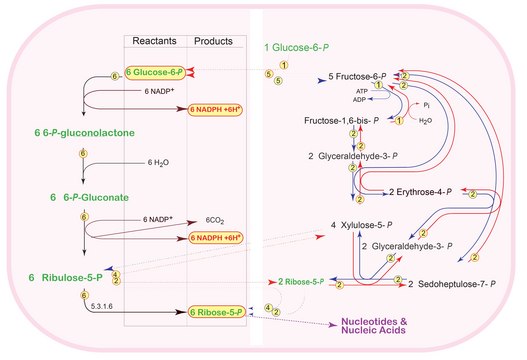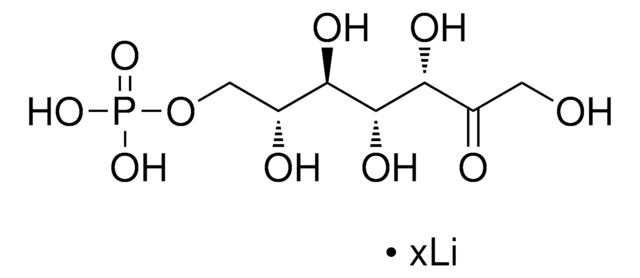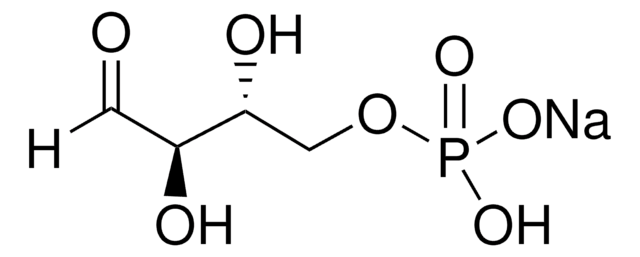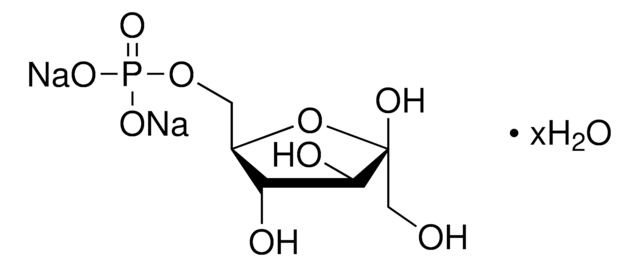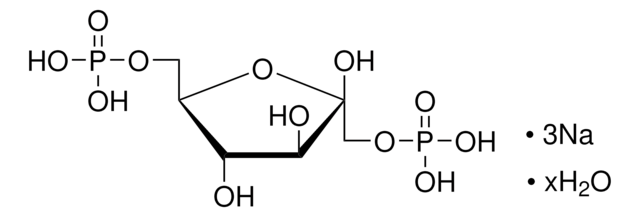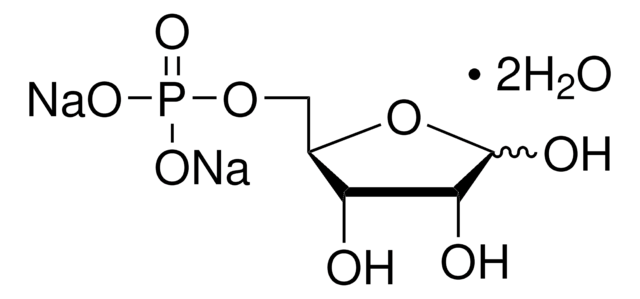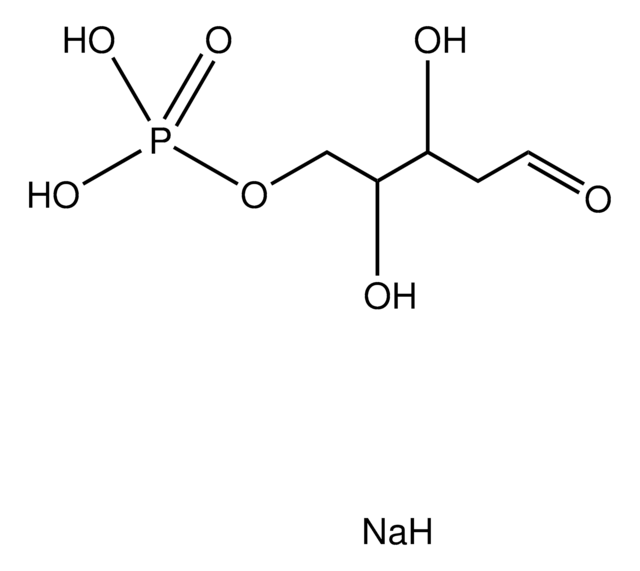All Photos(1)
About This Item
Empirical Formula (Hill Notation):
C5H11O8P · xLi+
CAS Number:
Molecular Weight:
230.11 (free acid basis)
MDL number:
UNSPSC Code:
12352201
PubChem Substance ID:
NACRES:
NA.25
Recommended Products
Quality Level
Assay
≥90% (TLC)
form
powder or crystals
storage temp.
−20°C
SMILES string
OCC([C@@H](O)[C@H](O)COP(O)(O)=O)=O
InChI
1S/C5H11O8P/c6-1-3(7)5(9)4(8)2-13-14(10,11)12/h4-6,8-9H,1-2H2,(H2,10,11,12)/t4-,5-/m1/s1
InChI key
FNZLKVNUWIIPSJ-RFZPGFLSSA-N
Looking for similar products? Visit Product Comparison Guide
Biochem/physiol Actions
D-Xylulose 5-phosphate (D-Xu-5-P) is a metabolite of the hexose monophosphate pathway activating protein phosphatase 2A to mediate the acute effects of carbohydrate feeding on the glycolytic pathway, the coordinated control of enzymes required in fatty acid & triglyceride synthesis. D-Xylulose 5-phosphate is the signal for the coordinated control of lipogenesis. The elevation of D-Xylulose 5-phosphate is the coordinating signal that both acutely activates phosphofructokinase in glycolysis and promotes the action of the transcription factor ChREBP to increase transcription of the genes for the enzymes of lipogenesis, the hexose monophosphate shunt, and glycolysis, all of which are required for the de novo synthesis of fat.
Storage Class Code
11 - Combustible Solids
WGK
WGK 3
Flash Point(F)
Not applicable
Flash Point(C)
Not applicable
Regulatory Information
监管及禁止进口产品
Choose from one of the most recent versions:
Already Own This Product?
Find documentation for the products that you have recently purchased in the Document Library.
Susen Becker et al.
Journal of chromatography. B, Analytical technologies in the biomedical and life sciences, 883-884, 68-75 (2011-11-15)
The analysis of metabolites in human body fluids remains a challenge because of their chemical diversity and dynamic concentration range. Liquid chromatography (LC) in combination with tandem mass spectrometry (MS/MS) offers a robust, reliable, and economical methodology for quantitative single
Kostas Tsintzas et al.
Clinical science (London, England : 1979), 124(11), 675-684 (2013-01-16)
Physiological hyperglycaemia and hyperinsulinaemia are strong modulators of gene expression, which underpins some of their well-known effects on insulin action and energy metabolism. The aim of the present study was to examine whether acute in vivo exposure of healthy humans
J J Wang et al.
Alcoholism, clinical and experimental research, 21(4), 576-580 (1997-06-01)
Thiamine deficiency, a frequent complication of alcoholism, contributes significantly to the development of damage in various organ systems, including the brain. The molecular mechanisms that underlie the differential vulnerabilities to thiamine deficiency of tissue and cell types and among individuals
Sigrun Langbein et al.
International journal of cancer, 122(11), 2422-2428 (2008-02-28)
Targeted therapies have demonstrated clinical benefit with limited impact on long-term disease specific survival in the treatment of renal cell cancer (RCC). New opportunities for the treatment of tumors that are resistant or have relapsed, are needed. Increased anaerobic glucose
Diana Hartmannsberger et al.
Cancer letters, 300(1), 20-29 (2010-10-05)
Transketolase-like protein 1 (TKTL1) is a member of the family of transketolase enzymes of which the founder member transketolase (TKT) is known to play a central role in the non-oxidative part of the pentose phosphate pathway. According to several publications
Our team of scientists has experience in all areas of research including Life Science, Material Science, Chemical Synthesis, Chromatography, Analytical and many others.
Contact Technical Service